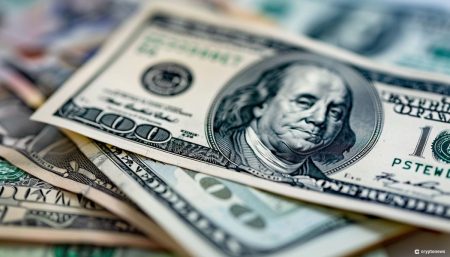English artist Damien Hirst is facing increased scrutiny after claims that he backdated over 1,000 pieces of art from his NFT project, “The Currency.” The controversy surrounds the allegation that Hirst misrepresented the dates of the physical paintings, which correspond to a matching NFT. Hirst claimed that all the physical paintings were made by hand in 2016, but sources revealed that they were mass-produced by a team of artists in 2018 and 2019. Footage from 2019 recorded inside Hirst’s studio confirmed the allegations, and lawyers for Hirst defended the 2016 date as the conceptual date of the project.
Purchasers of “The Currency” had the option to keep either the physical painting or its digital twin, not both. Hirst controversially burned the physical versions of those who selected the NFT in 2022, arguing that he was completing the transformation of the artworks into NFTs. The act of backdating, labeling an art piece with an inaccurate year of creation, is generally frowned upon in the art world. This is not the first time Hirst has been accused of falsely dating a piece, with a previous exposé revealing that three formaldehyde sculptures from the 1990s were actually created in 2017.
The allegations surrounding the backdating of the art pieces may harm Hirst’s reputation, cast doubt on the legitimacy of his works, and potentially decrease the value of his NFT project. The controversy has sparked concerns about the authenticity of the art industry and the ethics of misrepresenting the creation dates of artworks. Hirst’s actions have raised questions about the boundaries between physical and digital art, as well as the impact of technology on traditional forms of art ownership. The revelation has brought attention to the need for transparency and ethical practices in the art world to maintain trust and integrity among artists and collectors.
The controversy surrounding Damien Hirst’s NFT project highlights issues with authenticity and transparency in the art world, particularly in the digital art space. The case raises concerns about the potential for manipulation and deception in the creation and sale of art, as well as the importance of verifying the provenance of artworks. The backlash against Hirst’s alleged backdating of art pieces underscores the importance of ethical practices and truthful representation in the art industry to uphold the value and integrity of artworks. As technology continues to influence the art market, artists and collectors must navigate the ethical implications of digital art creation and ownership to protect the credibility of the industry.
Overall, the accusations against Damien Hirst regarding the backdating of artworks from his NFT project “The Currency” have sparked controversy and raised questions about the ethics of art production and sales. The case serves as a reminder of the importance of transparency and honesty in the art world, as well as the need for artists and collectors to adhere to ethical standards. The impact of the allegations on Hirst’s reputation and the value of his NFT project remains to be seen, but the incident highlights broader issues within the art industry regarding authenticity, provenance, and the intersection of physical and digital art forms. Moving forward, the art world must address these challenges to maintain trust and credibility among artists, collectors, and the public.















